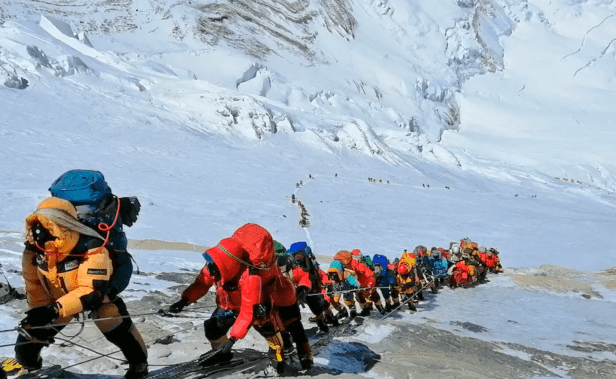‘Forever chemicals,’ other pollutants found around the summit of Everest
By Murray Carpenter | Washington Post | April 17, 2021

Read the full article by Murray Carpenter (Washington Post)
“From an elevation of 27,600 feet, just below the summit of Everest, researcher Mariusz Potocki could see one of the planet’s most dramatic scenes — the snow-capped Himalayas against a deep blue sky. He was on a mission to gather snow and ice samples at the summit, but just above him was another startling sight: a line of climbers so dense that a photo of it went viral.
His team had stopped at a resting spot climbers call ‘The Balcony,’ and the snow there was littered with feces, oxygen bottles and other trash. But he wanted to gather what samples he could, so he ascended a short distance to find some cleaner snow off to the side of the trail. ‘I just pulled out the bottles and took samples,’ he said.
And then another surprise: There, at the roof of the world, the snow samples showed traces of toxic chemicals known as PFAS, laboratory analyses done later showed. More notable results came from samples his colleagues gathered at lower elevation, which revealed these substances at levels far higher than at other mountains around the world.
‘We were shocked,’ said Kimberley Miner, an assistant research professor at the University of Maine Climate Change Institute, who coordinated the research remotely from the United States. ‘We retested everything like three times, because it was much higher than we expected.’
The study by Miner and colleagues, published in December, was part of the 2019 National Geographic and Rolex Perpetual Planet Everest Expedition, a large, interdisciplinary research project intended to understand the climate change threats facing mountain systems. It shows chemical fingerprints smudging even the world’s tallest peak in ways unseen and previously unstudied…”
This content provided by the PFAS Project.
Location:
Topics: